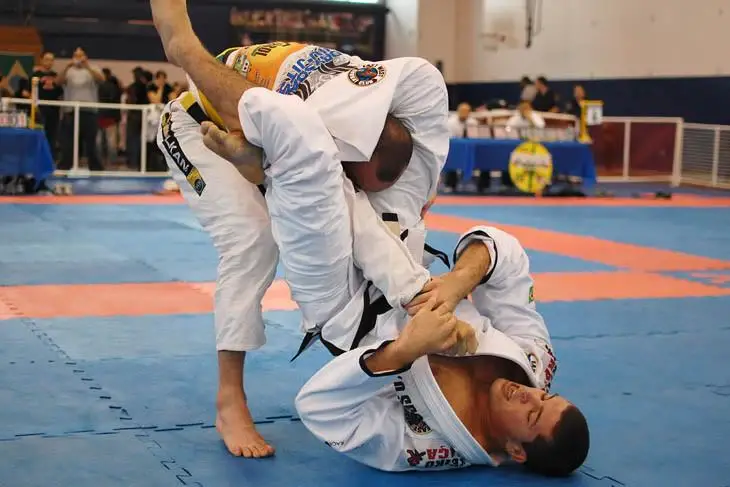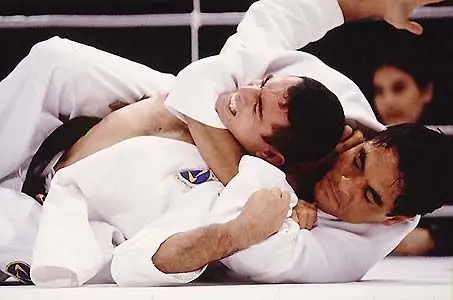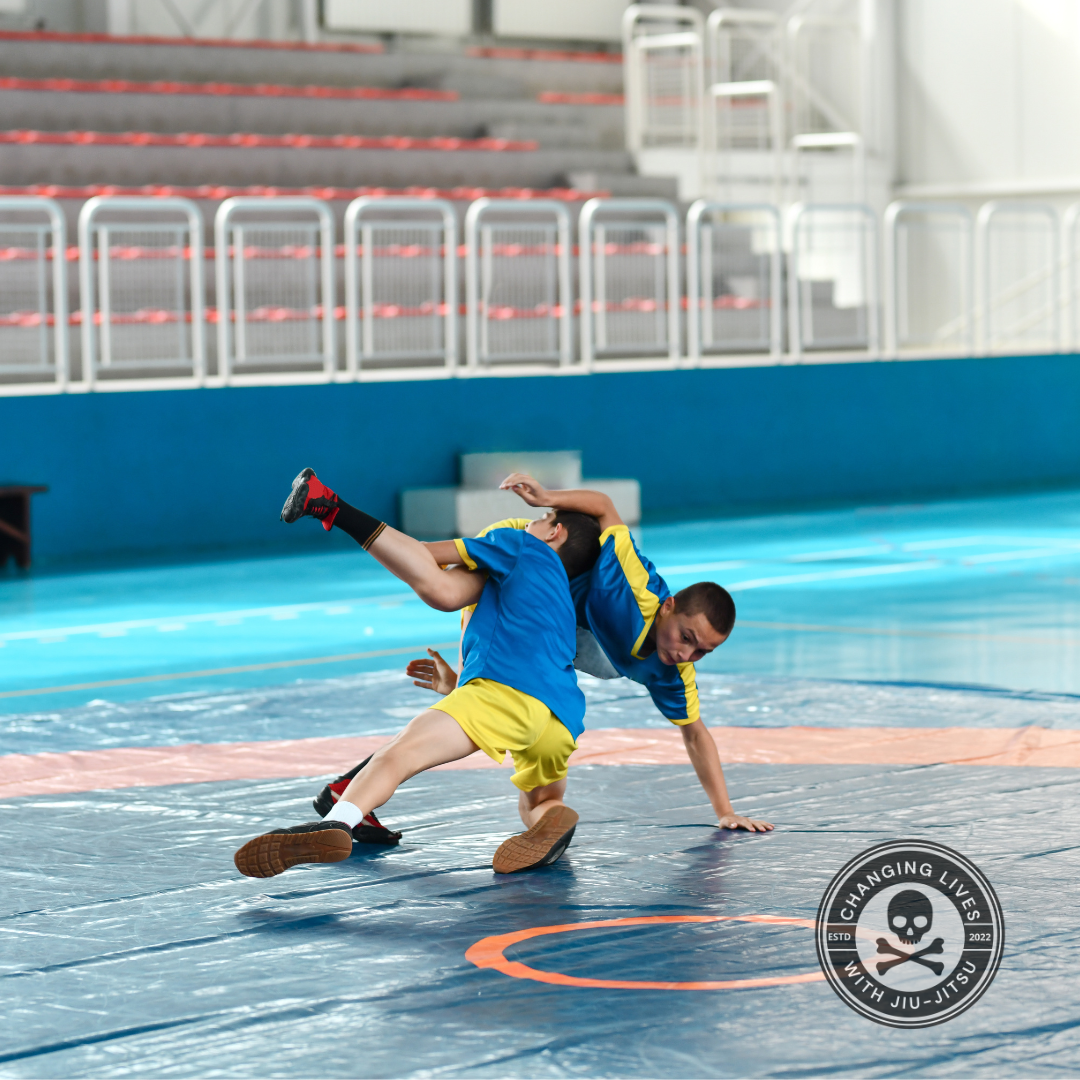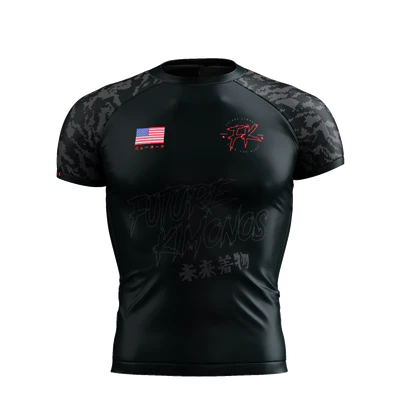Dallas Robinson
Table of Contents
The sport of Brazilian Jiu-Jitsu has an incredibly wide variety of submissions to choose from. One of the best parts about practicing this martial art is the ability to choose which skills you want to hone. Although there are hundreds of grappling techniques to try, it is important to start simple. Here is a list of some basic BJJ positions and techniques that every beginner should understand
Jiu-Jitsu Techniques Every Beginner Should Know
Armbar
The arm bar is one of the first submissions you will learn when beginning your BJJ training. Arm locks are typically done by managing to get one leg over your opponent’s body and the other over their head. While holding onto the arm, you use your hips as a fulcrum to drive pressure into the elbow joint. Although it is a very simple concept, the straight armbar is widely accepted as one of the most useful submissions in martial arts history.

Shrimping (Hip Escapes)
Shrimping can be a confusing motion for those who are just starting their Jiu-Jitsu journey. When in a bad position such as side control, the shrimping motion also known as a hip escape, is executed to make space between you and your opponent’s hips. By doing so, you can begin to bring your legs between you and your competitor retaining your guard and living to grapple another day. But how is the move technically done?
Assume that you are in someone else’s side control. Framing with your arms is the first step to making it back to your guard position. To frame, use your forearm closest to your opponent’s body to push against their hips. Bring your other forearm up to your opponent’s jaw/neck area and begin to make space. Frames are a great way to stop your opponent from crushing you into the mat.
Once you have your frames set up, begin to lift your hips off of the mat while keeping your shoulder blades and upper back on the ground. This will allow you to move easier later on. Once your hips are elevated, begin to turn onto your side facing your opponent. Use your frames to push off your competitor’s body and move your hips as far back as possible. This movement offers space to bring your legs back in between you and your opponent, retaining guard.

Triangle Choke
The triangle choke is one of the only moves in Jiu-Jitsu that, if done correctly, allows for complete control over your opponent. The triangle typically begins in the guard but can be done from almost any semi-dominant position. The main goal of the submission is to use your leg and your enemy’s arm to cut off blood circulation to the brain.
To begin, acquire double sleeve grips while your competitor is inside your closed guard. Swiftly push one of their arms against their chest while moving your hips up and bringing one leg on top of the trapped arm. Once you manage to get one leg over their stuffed arm, cross your feet again as if you are closing your guard. At this point, one of your legs should be above an arm, and the other should be below an arm. This is known as the diamond position. Be sure to apply downward pressure with your legs to keep your opponent’s posture down.
Once in the diamond position, grab the arm stuck between your legs and drag it to the opposite side of your opponent’s body. This movement cuts off the flow of blood to the brain on one side of your opponent’s neck. With the hand on the same side of your competitor’s trapped arm, reach up and grab your opposite side ankle pulling it into your other leg’s knee. This is known as the triangle position. Finish the choke by squeezing your legs tight and under hooking your opponent’s knee with your arm. This action changes your angle and tightens the choke up allowing for less possibility of escape.
When done fluidly, the triangle is one of the most effective submissions in all of Jiu-Jitsu.
Find top-rated rash guards here

Mount Position & Mount Escape
Mount is arguably the most dominant position in BJJ. Having overall control of your opponent’s upper body leaves countless doors open leading to an incredible amount of submission techniques. The mount position is acquired when an athlete has both legs straddled over their enemy.
Not only is this a good position to have in Jiu-Jitsu, but it is also a very dominant position to be in if a fight breaks out on the streets. Mount leaves your opponent vulnerable to submissions and punches as well.
So how do you go about escaping from the mount?
Begin by pulling your elbows in tight to your body. Turn to your side and use both hands to push one of your opponent’s knees down. At the same time, begin to lift your foot closest to the ceiling and place it on the other side of your competitor’s leg. Then, with a swooping motion, use your ankle and calf to pull your enemy’s knee between your legs. Finally, cross your feet and squeeze as if you are holding your opponent in closed guard. This position is known as half guard; when you have one leg trapped between yours. From half guard, you can either continue into closed guard or begin to work sweeps and submissions from that position.

Side Control
Side control is similar to mount in the way that both positions aim to take control of the top half of an opponent’s body. The difference is that in side control, your legs are to the side of your opponent instead of straddled on top. Typically, side control is achieved once you pass a practitioner’s guard.
When you have made it to the side of your opponent’s body, bring the arm closest to their head and wrap it under their neck. Then, take your arm that is near their legs and bring it under your enemy’s far arm. Lock your hands together palm to palm and do your best to pull your competitor’s body onto your legs, securing the position.
There are countless submission options both in Gi and No-Gi when you find yourself in side control.

Rear Naked Choke
When done correctly, the rear naked choke can be an incredibly fast and easy submission. To set up this Jiu-Jitsu technique, you must be behind your opponent. Start by taking their back. Once you have completed that difficult task, you can begin working on your R.N.C. Remember, position almost always comes before submission.
begin by taking your right hand and wrapping it around your opponent’s neck. You want the end your elbow to be pointing straight in front of you. This little tip makes a big difference. It ensures that your bicep and your forearm work together to cut off the blood to the brain.
Next, take your left arm and hold it straight out in front of you. Then, cup your left bicep with your right hand while bringing that left hand to the back of your competitor’s head. Once in position, squeeze and wait for the tap!

Closed Guard
A closed guard is an extremely powerful tool used to either sweep or submit an opponent. In the sport of Jiu-Jitsu, every match starts with both competitors standing. This means you have two options when the match begins, either look for a takedown or pull guard. Jiu-Jitsu practitioners should know how to effectively take someone down while also being able to pull guard when they need to
To pull to closed guard, first, you need grips. Take your right hand and place it on the collar of your opponent’s kimono. This will help control their posture when you decide to pull guard. With your left hand, grab their sleeve. Place your left foot onto your opponent’s hip and sit back on your butt. It is important to use the sleeve side leg to post on the hip to protect yourself from getting your guard passed immediately.
Once you are on the ground, use your grips to pull your enemy between your legs and lock your feet together. Congratulations! You have successfully pulled into closed guard!

Guard Retention
Seeing as Guard play is 1/2 of Jiu-Jitsu, guard retention is extremely important. The ability to stop someone from passing and getting a dominant position is essential if you are looking to excel in BJJ. Here are some of the best tips for being able to retain guard.
Stretch
Flexibility is essential when participating in any grappling art. When it comes to retaining your guard, being flexible will allow you to sneak your legs back in front of your opponent before they can pass. Even though stretching is typically forgotten about by athletes, it has been shown to increase mood along with performance.
Strengthen your grips
Grip strength is necessary when attempting to stop someone from passing your guard. When in Gi, holding on to your opponent’s kimono allows you to set up different guard variations allowing for stronger guard defense. Even without a Gi, holding on to the wrists, ankles, and neck with a strong grip can be enough to keep your enemy from passing your legs
Practice different types of guard
Having a wide array of guards that you can play at any time is very beneficial for a grappler. When your opponent begins to pass one type of guard, switch to another and begin to attack from there. De la Riva and Reverse De la Riva go hand in hand along with X Guard and Single Leg X Guard.
Find the top-rated BJJ Gi's here. Helpful information on what to look for, how to find the best gi, and which brands suit you best based on your budget!

Basic Sweeps
Now that you know how to keep someone from passing your guard, let’s start going on the offensive. There are two ways to attack your opponent from your back. You can either begin to set up submission holds, or look to sweep your enemy onto their butt. Here are a few basic sweeps from closed guard
The Scissor sweep
The scissor sweep is one of the most basic yet effective techniques in Jiu-Jitsu. To begin, place your left hand on your opponent’s right sleeve. Remember to get a strong grip whenever taking control of your partner’s kimono. Your left hand will go to the opposite side collar. These grips ensure that your enemy’s posture is broken while you execute the technique.
Then, unlock your guard and bring your right leg horizontally across your opponent’s body. Your left leg should drop down in line with your opponent’s right thigh acting as a barrier.
Once you are ready, extend your right leg and chop out your enemy’s base with your left. Make sure to pull their sleeve to ensure a clean and swift sweep. After execution of the scissor sweep, you should end up in the Mount position.
The Hip Bump Sweep
The hip bump sweep is extremely useful when first learning BJJ. Similar to the Scissor sweep, start in Closed Guard. Begin to swing your body side to side to create momentum. This is essential to execute the sweep properly, once enough momentum is built up, pick which side of the body you want to sweep over. For this example, we will be sweeping over our opponent’s right arm.
Sit up on your left hand while bringing your right arm over your opponent’s shoulder. Then, use your hips to bump your enemy over while using your right arm to pull their tricep into your chest.
Just like the last sweep, the Hip Bump will land you straight into Mount!
Takedowns
Takedowns are possibly the most entertaining part of Jiu-Jitsu. Being able to put someone on their back is a very powerful skill to have. There are hundreds of takedowns that you can try, here are a few of the basics
Double Leg Takedown
Like every other takedown, the Double Leg starts in the neutral/standing position.
Begin by getting into your Wrestling stance, with your legs staggered. If you are a righty bring your right leg forward and vice versa for the lefties. Once you are in your stance, take a step with your front leg and drop to your knee.
Next, use your arms to grab around your opponent’s thighs. Then, step up to the side of your opponent with your back leg. Finally, stand to your feet, then lift and drive your opponent into the mat.

Hip Throw
Originating from the sport of Judo, O Goshi or the Hip Throw is a swift and simple takedown that everyone should know. To begin, use your left hand to grab your opponent’s right wrist. Then, take your right arm and wrap it around your enemy’s hips. Step your right foot in front of your opponent’s foot and do the same on the left side. Bend your knees and pull your competitor onto you. Finally, extend your legs while pulling with your left hand to finish the technique

Jiu-Jitsu has an incredible variety of different moves and techniques to master. Although it is very exciting, it is important to learn your basics before diving deeper into more advanced techniques. A solid base allows for fast and easy progression.
Happy Rolling!
Find the top-rated BJJ Gi's here. Helpful information on what to look for, how to find the best gi, and which brands suit you best based on your budget!
Newsletter
Signup for news and special offers!
Thank you!
You have successfully joined our subscriber list.


